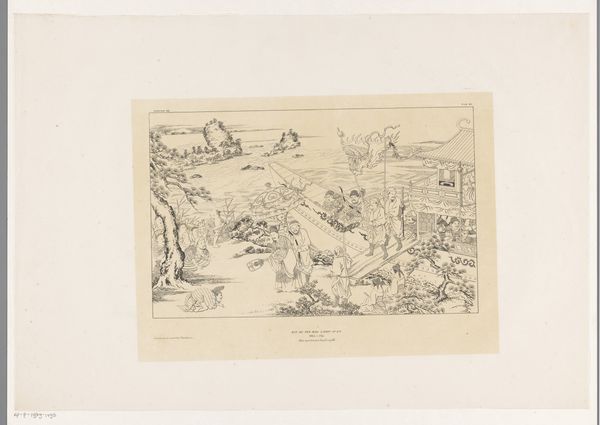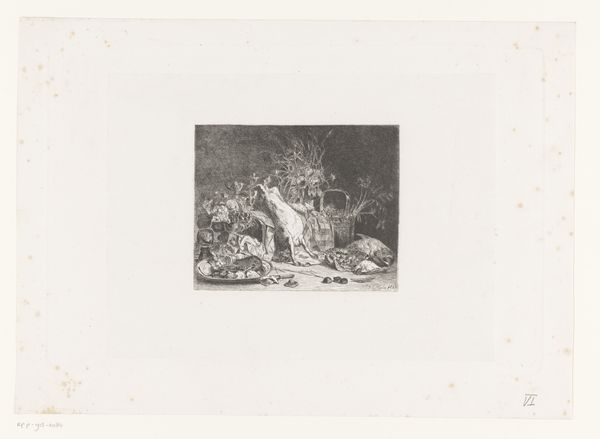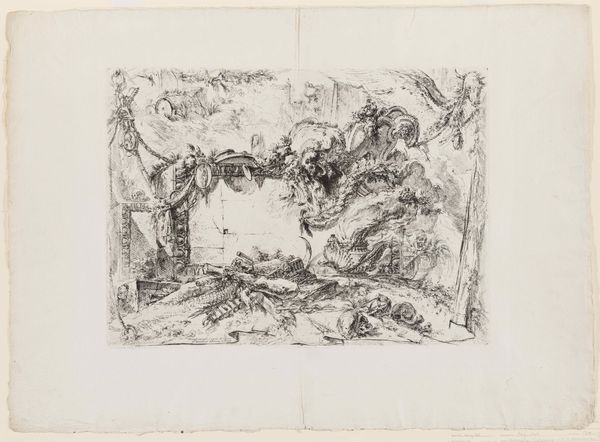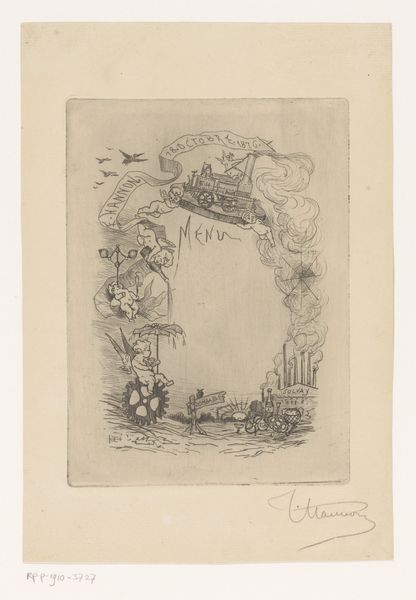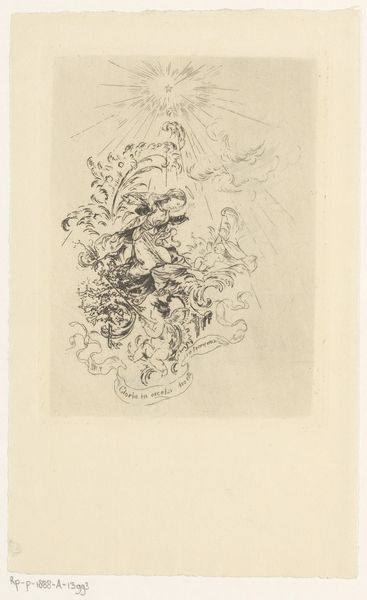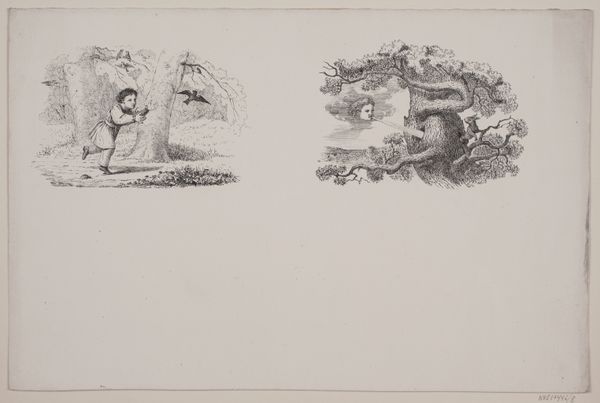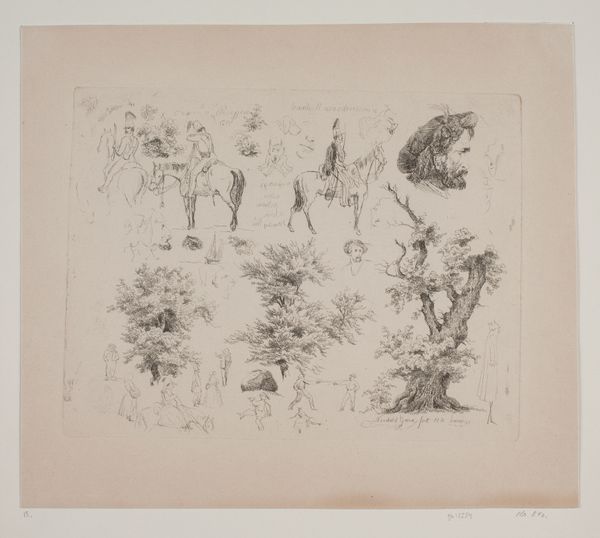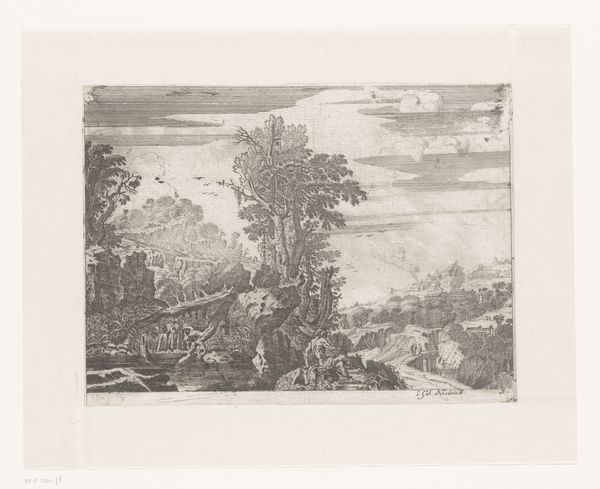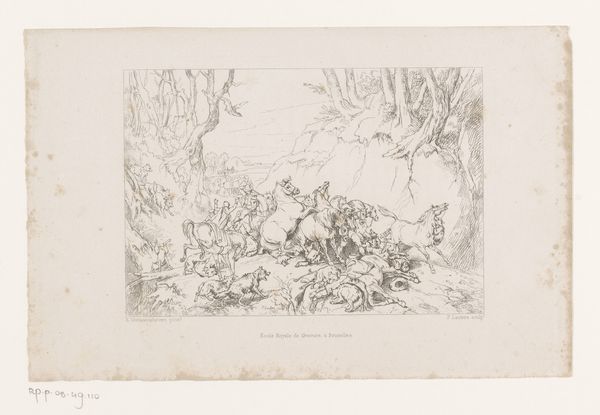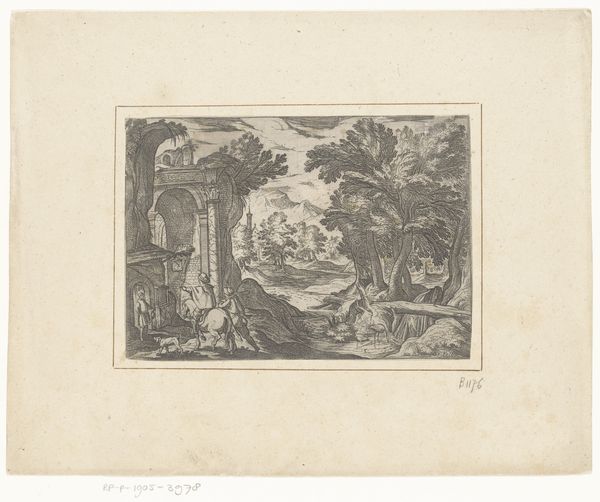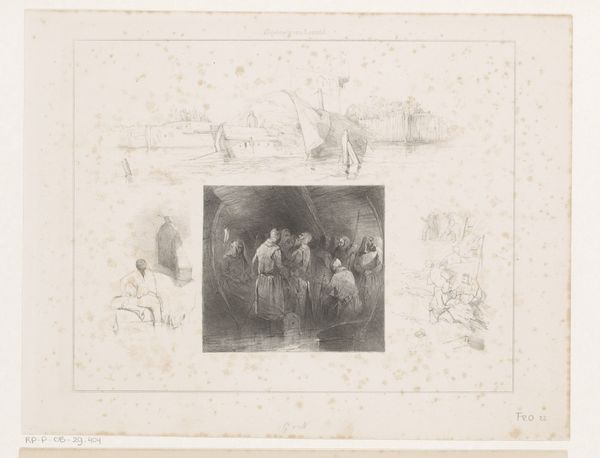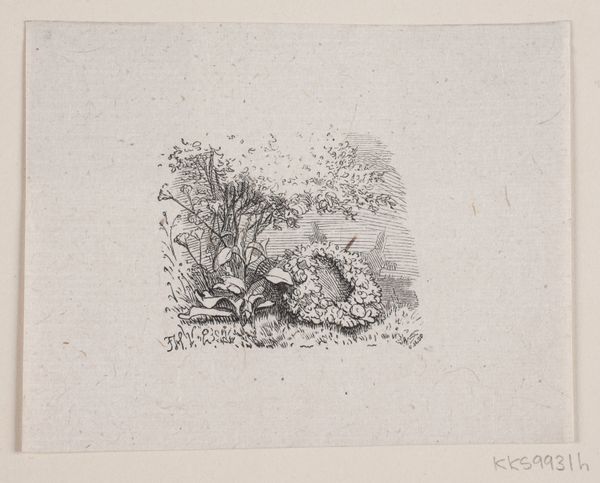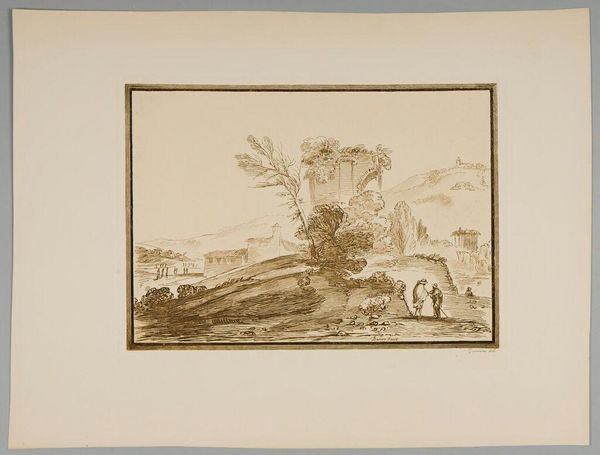
Dimensions: 168 mm (height) x 235 mm (width) (bladmaal)
This line drawing, a vignette for Sophus Schandorph's "En Romersk Nat," conjures classical Rome with its fig tree, angel, and architectural ruins. These elements, imbued with historical weight, carry emotional and cultural significance far beyond their immediate representation. The fig, a symbol of prosperity and peace in antiquity, frequently adorned Roman villas, signifying abundance and domestic harmony. Note the playful angel figure, reminiscent of Cupid, tugging on a branch. This motif echoes in Renaissance art, where cherubs embody divine love and earthly desire. The juxtaposition of classical ruins with such symbols creates a sense of nostalgia, longing for a lost golden age. The ruins evoke the passage of time, and the inevitable decay of even the grandest civilizations. It serves as a memento mori, urging reflection on mortality. The cumulative effect is a powerful engagement of viewers' subconscious—a reminder of the cyclical nature of history and the persistent presence of the past in the present. Symbols such as these resurface and are reborn in new cultural contexts, evolving yet retaining a powerful resonance.
Comments
No comments
Be the first to comment and join the conversation on the ultimate creative platform.
